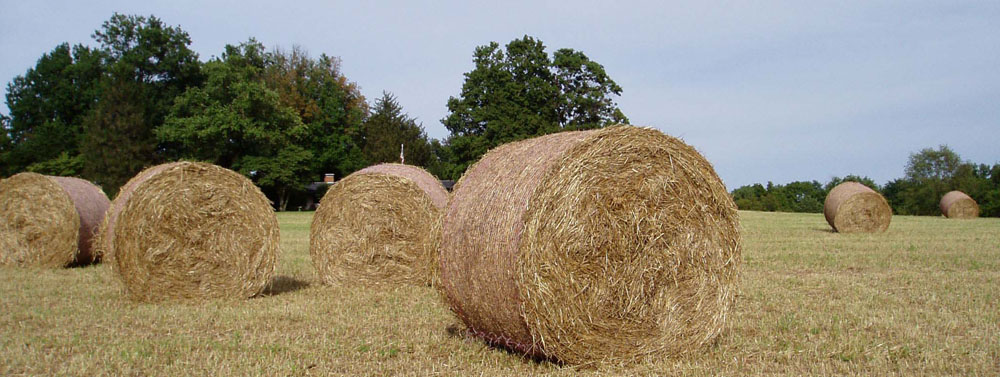The More For Less of Trade – Real Adventures in Economics
Trade fundamentally seeks out the most efficient combination of resource use. In economic terms, it optimizes the lowest opportunity cost. The US, and more recently Brazil, produce soybeans so well they supply the world. When other nations import soybeans, it is less expensive for them to purchase our soybeans at the world price than to produce them locally in their own country. We are the low opportunity cost producer.
In this undergraduate economics multiple choice question, trade provides a comparative advantage benefit to the lowest opportunity cost producer. It works both ways. The US imports more than it exports because other countries are the low opportunity cost producer over the United States. But in real life, trade is much more complicated.
#1 Complicated Trade Facet, Trade = imports + exports.
Discussions of trade and imports, or trade and exports, are mixing terms that are not the same nor mutually exclusive.
#2 Complicated Trade Facet, Trade is not always international.
My undergraduate economics students at Greenville University learned first about simply trading goods and services without geographic proximity. Later, it was expanded to global trade. Trade is still the optimization of the lowest opportunity costs, whether locally or globally.
#3 Complicated Trade Facet, Teach a man to grow his own food, or sell it to him?
In the early 1980’s, I went to Nepal to work as an agronomist to help Nepali farmers grow more food. It sounds easier than it was. I worked on a brilliant USAID cropping systems program. There were many problems in my area, but in other areas of Nepal, it was AMAZING! I remember riding by stacks of harvested wheat. In the fertile area along the Indian border, farmers went from starving to having surplus wheat to sell. There were still areas of Nepal that needed wheat, but India was closer and easier to get to than the mountain valleys within Nepal to the north.
I returned to the US, farmed for a while in the 1980s, then went to graduate school and became a PhD ag economist. I worked professionally while US agriculture became a global agricultural trading partner. So I have cultivated new ag exporters as well as expanding US ag exports.
Is it more economically efficient to teach subsistence level farmers to grow more? Or to become so efficient at producing food that the world can buy it from the US cheaper than growing it in their own countries? There are good reasons to do both. And so, we have, all over the world.
#4 Complicated Trade Facet, Rapid trade expansion for 60 years, paused last 15 years.
After WWII, the world was exhausted from fighting. Prior to that it was not uncommon for the US to have import tariffs of fifty percent. But from the 1950s on, international trade became increasingly more common. Some countries worked harder at it than others. Some were very successful.
When Mr. Trump became President the first term, the world became familiar with international trade again. Tariffs were back in the news. Curiously, again, Mr. Biden did not undo the tariffs on China, but increased them. But what a roller coaster!
- 2018-2019 Mr. Trump increase tariffs on multiple countries.
- 2020 the world shut down for COVID-19
- In April of 2020, a miscalculation in a specific crude oil negotiation created a closing futures price of crude oil of minus $37 per barrel. Which meant if you were selling that day, you paid someone to take it.
- 2021 had supply chain stoppages.
- 2022 Russia invaded Ukraine – both countries exporters of grain and fossil fuel.
- Then high inflation rates in the US.
Economic chaos is the BEST time to teach economics. Young adults have questions and pay attention. As I began this list with Mr. Trumps initial tariffs, that was my bias. I was fascinated by living through a protectionist strategy.
I was surprised to learn that the global economy had been contracting for nearly a decade before the 2018 trade barriers went up. In 2022, the Wall Street Journal reported World Bank Data that showed trade as a percent of GDP stopped increasing about 2008. The link in the last sentence takes you to the current chart at the World Bank, but I wrote about it in the post, “Local, the Uneasy Substitute for Global”. From 1948 to 2008, sixty years, the world with most of its 200 countries increased the share of trade as a part of an interdependent global economy. The last 17 years, the nations of the world collectively have been pushing away from international trade.
#5 Complicated Trade Facet, ‘Buy Local’ works for saving local Mom & Pop stores and also globally for nationalistic protectionism.
‘Buy Local’, to save independent grocery stores and build rural communities, operates on the same economic planks as building barriers to international trade. Buying local in small towns and powerful nations means lowering the opportunity cost in places where it was not the lowest to begin with. Sometimes it means artificially raising barriers to local markets (like tariffs), to give the local businesses a better chance.
Biomass energy is most certainly more local than global. While some biofuels are traded globally, the economics of moving bulky organic materials are more favorable for local use than global use. Biomass Rules walks both sides of this line. Local economics work sometimes. Global economics work sometimes. Either way it comes back to optimizing the lowest opportunity cost.
#6 Complicated Trade Facet, Dollar values do not always reflect perfect information.
Last month, most of this cumulative US knowledge on international trade took a back seat. In 2025, US trade policy has other priorities. I think part of the chaos is due to a simplifying assumption that dollar values are always efficient. That simply is not the entire story.
The last two posts in this blog space were on gaps in rural community data. Greenville University posted in January a beautiful portrait of my wife, Dr. Tracy Hall’s 35-year career as a rural health, family physician. It too highlights benefits that are not easily quantified with dollars.
Economic theory is powerful when the data is reflective and transparent about the transfer of value. We have tremendous amounts of great data for which economics and profit do well in telling the story. When it works, the data is a good proxy for the economic assumption of perfect information. But when there are gaps in emerging industries and emerging economies, the dollar value does not reflect value accurately. The information is not always complete or perfect.
Earlier I wrote that local high school football games keep happening because the communities value the authentic benefits, even when the budget does not cover the cost. At some point sooner, or later, the global community will find a way to refocus the dollar-only based lens, to a lens that reflects the difficult to monetize benefits of cultural values. Both lenses play important roles.



Comments
The More For Less of Trade – Real Adventures in Economics — No Comments
HTML tags allowed in your comment: <a href="" title=""> <abbr title=""> <acronym title=""> <b> <blockquote cite=""> <cite> <code> <del datetime=""> <em> <i> <q cite=""> <s> <strike> <strong>